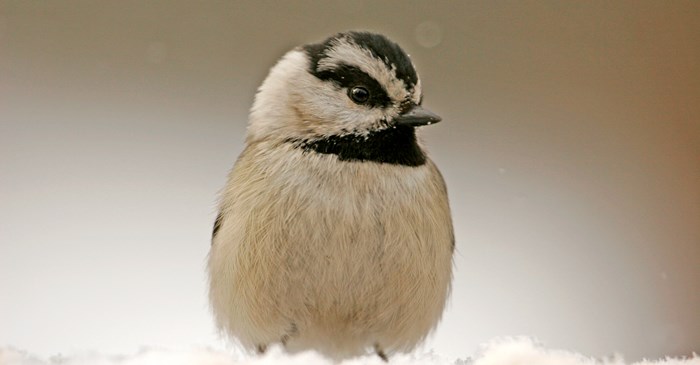Tiny, inquisitive and vocal, the Mountain Chickadee is found in conifer forests through much of the Western U.S., flitting among the treetops in search of pine seeds and insects.
These birds are closely related to the Black-capped Chickadee, which is found throughout the northern half of the U.S. The two bird species look and sound very similar, with black and white heads, gray backs and wings, and buff-colored breasts, their chicka-dee-dee calls ringing out year round.
The habitat of the Mountain Chickadee
How can you tell a Mountain Chickadee from its black-capped cousin? The Mountain Chickadee has a scratchier-sounding call, and sports a bold white eyebrow. If you live out west, you’ll find the Black-capped Chickadee in lower elevations, especially near creeks and deciduous trees. The Mountain Chickadee makes its home in the higher elevations, at 6,000 to 11,000 feet in mountain pine forests, where they feast on caterpillars, beetles and spiders by summer, and search for seeds and berries in mixed flocks by winter.
Chickadees are noted for their complex communication system, which scientists believe shares similarities to human language — some of their songs and calls have specific meaning. In the case of the Mountain Chickadee, scientists have found dialect differences in their songs, particularly between populations from higher elevations versus those from lower elevations. Scientists believe these dialects reflect habitat differences in the two environments and how the Mountain Chickadee adapts.
Tips for feeding the Mountain Chickadee
Like many chickadee species, the Mountain Chickadee is likely to be one of the bold first arrivals to a new feeder, especially if your mix includes black-oil sunflower seeds. Fill your feeder with Lyric Chickadee Mix and watch as they fly up into a tree with a single seed, hold their prize with one foot, and hammer open the shell.
